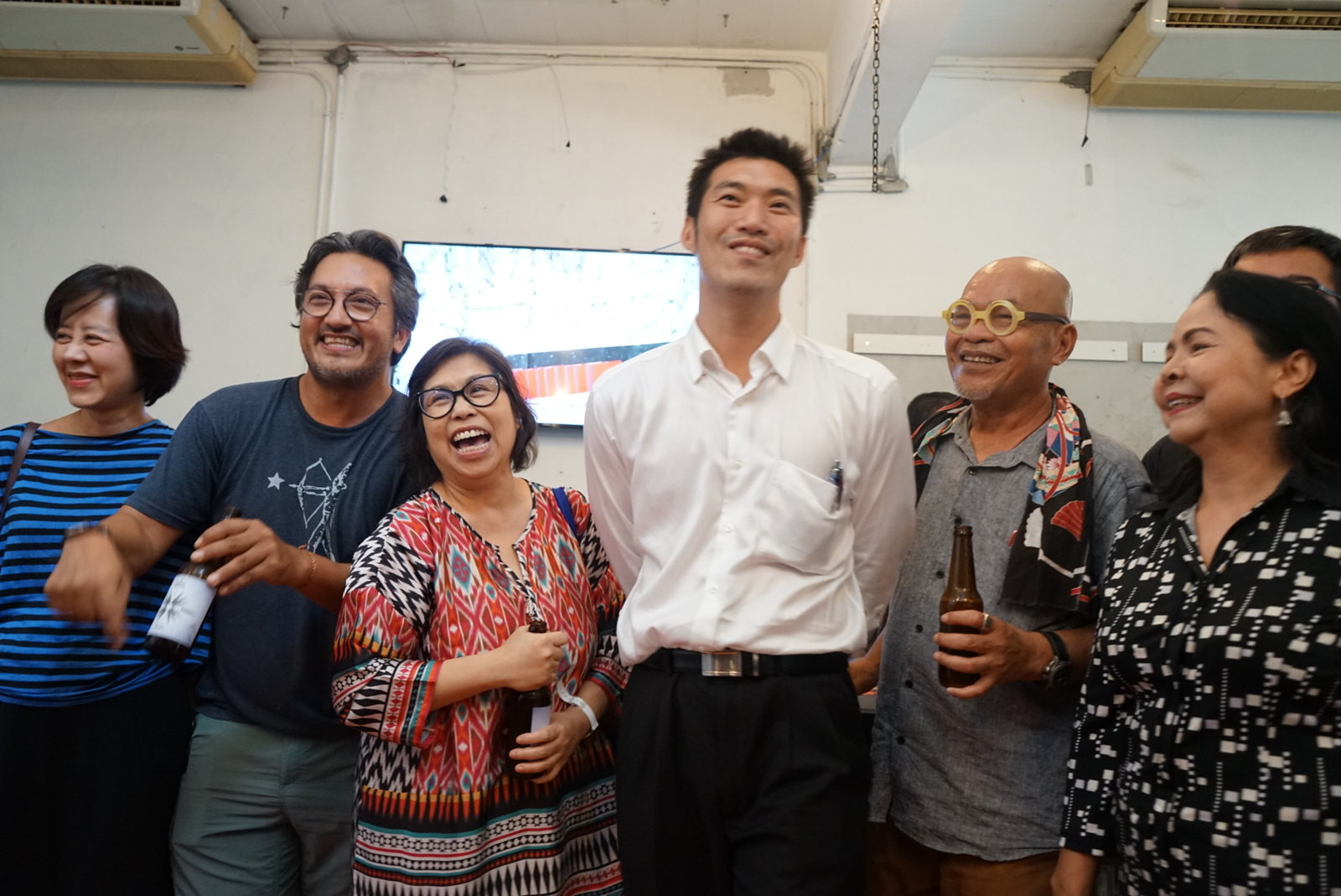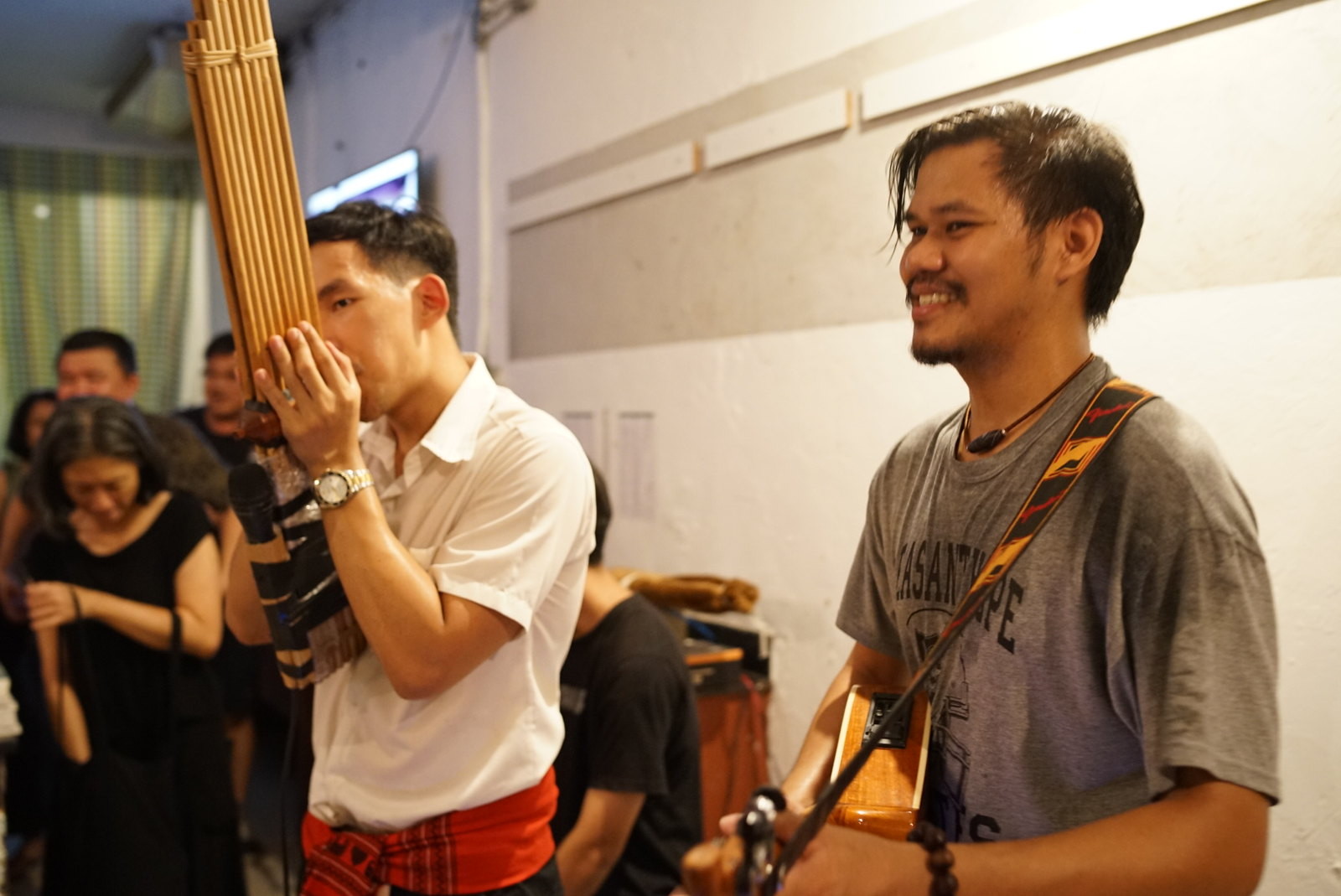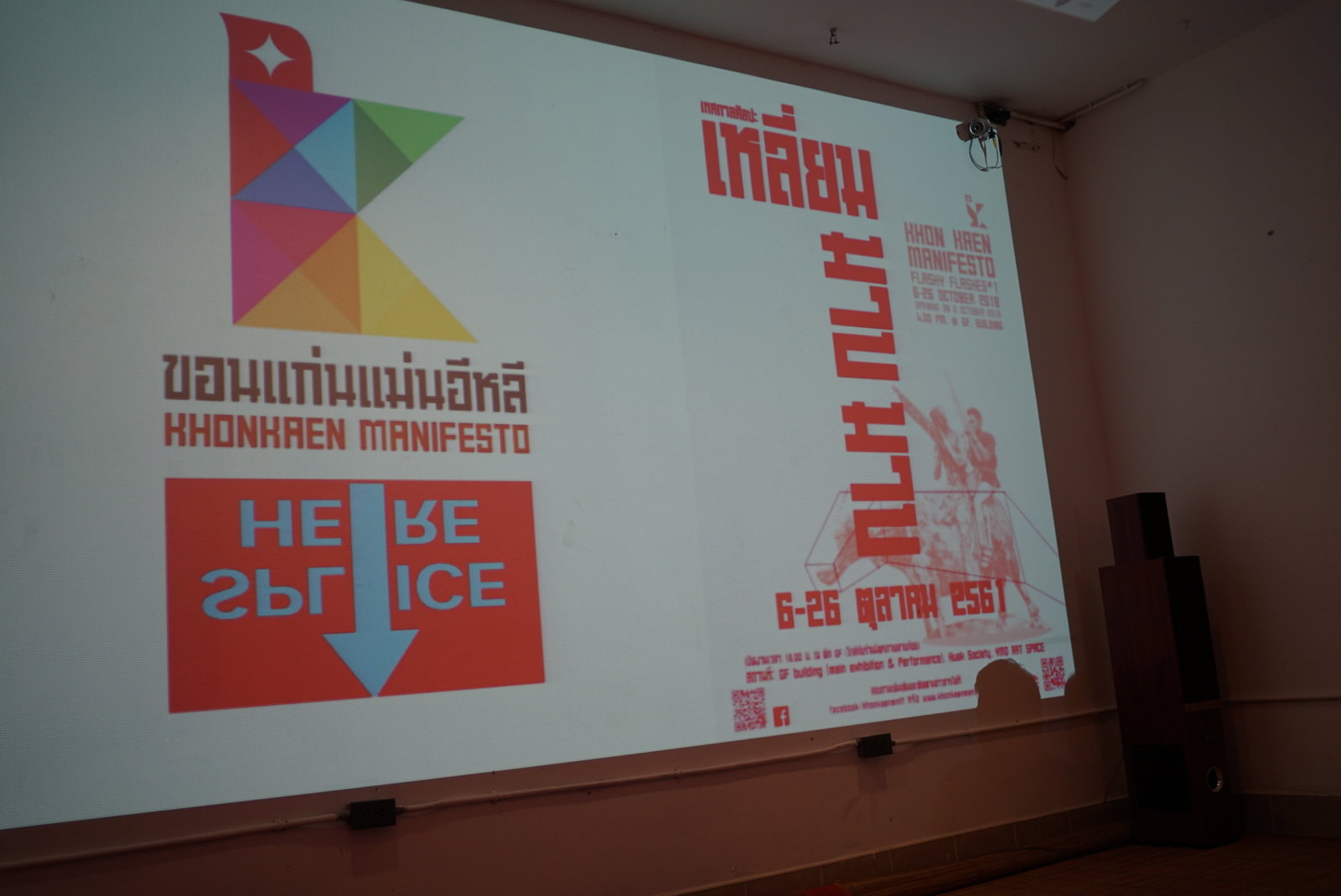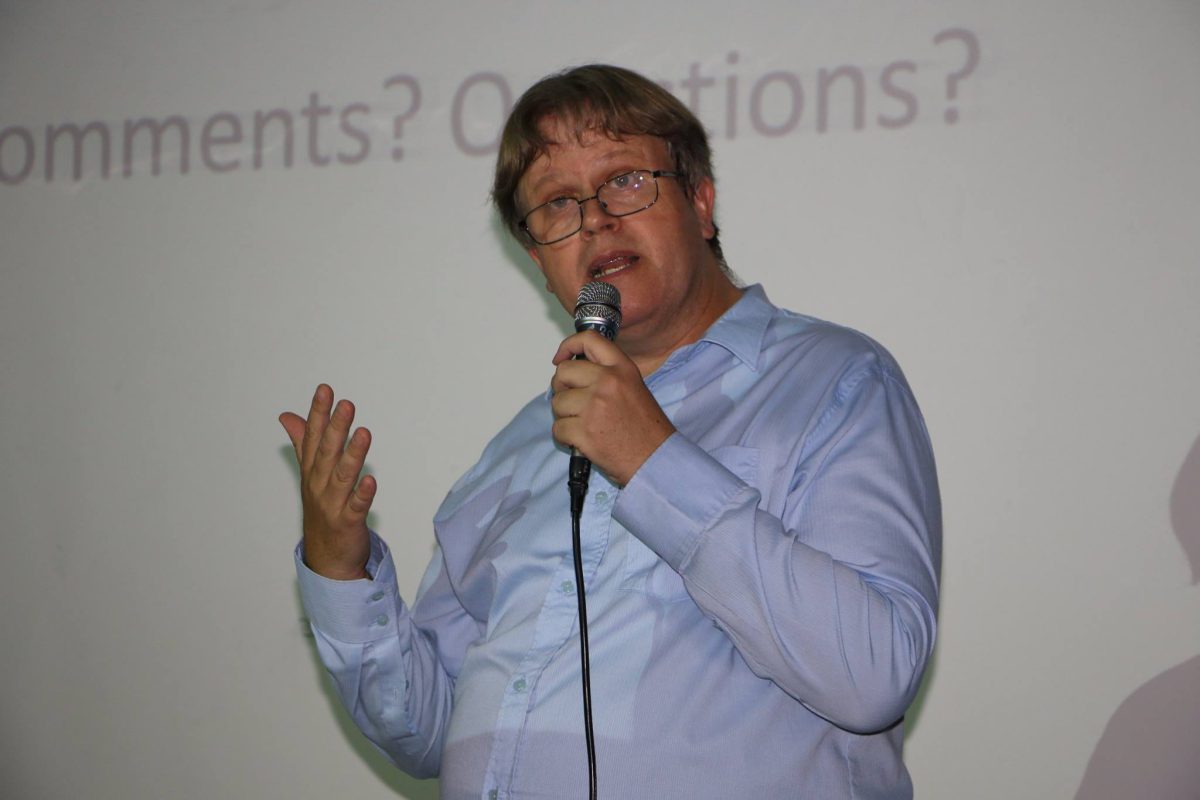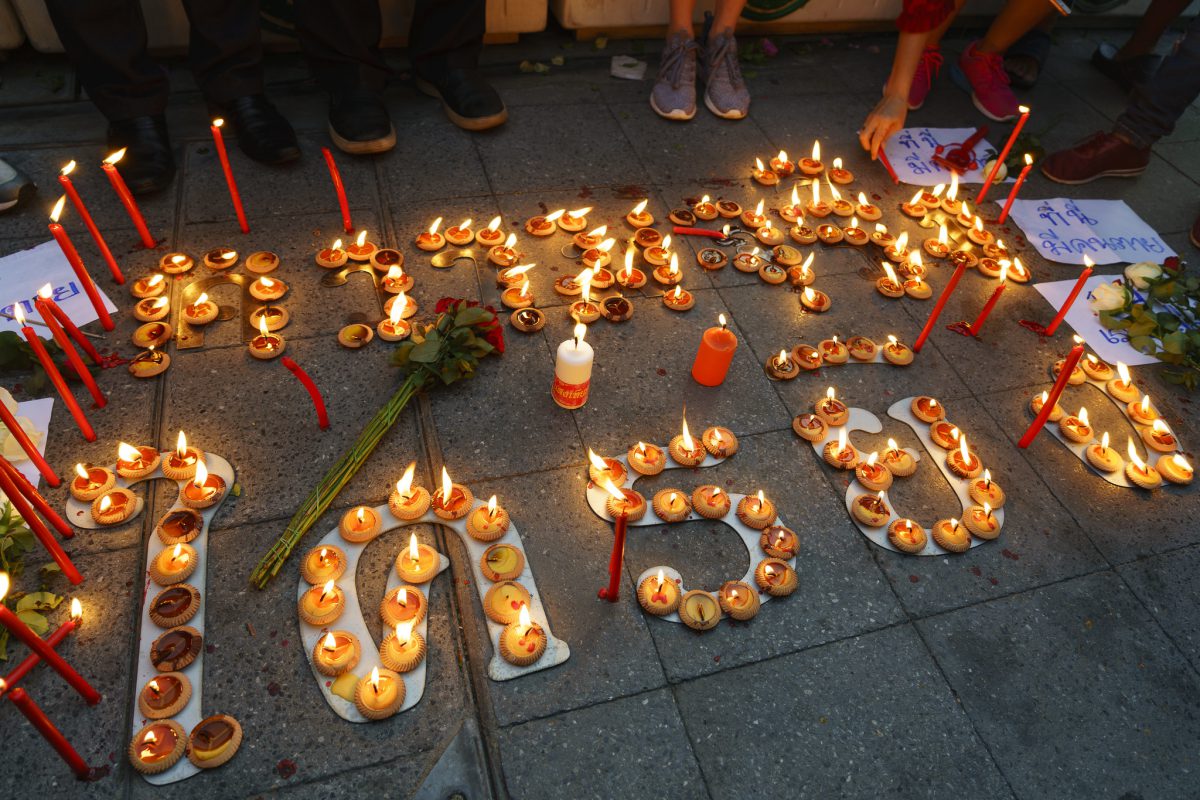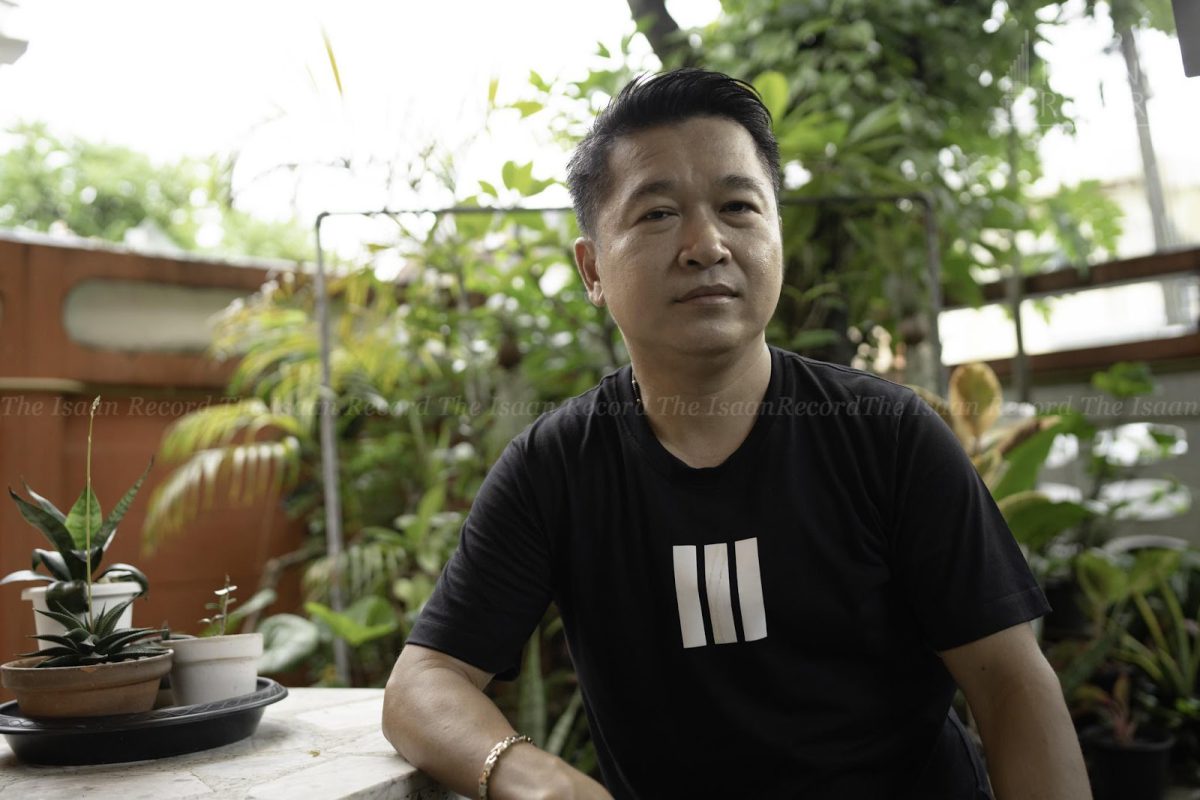Sporting thick yellow-rimmed glasses and a cigarette in one hand, the man who some consider Thailand’s most sharp-tongued art critic, humbly introduces himself with “I’m a Lao-Isaan Suay guy who likes to eat beef laap and koi.”
Born and raised in Sisaket, Thanom made a name for himself as a Bangkok university lecturer teaching art theory and cultural criticism. In the country’s art circles, he became known for rarely holding back with questions and criticism when attending exhibitions. His experience in travelling to art shows worldwide has allowed him to critique art with a certain amount of credibility.
After retiring from a position at Srinakharinwirot University’s visual arts department last year, he turned back to his home region and founded an alternative art festival.
“Khonkaen Manifesto” was held as a 20-day art event in a crumbling, abandoned building in Khon Kaen city last October. Observers described the exhibited art as bold, subversive and radical, and the event’s concept as something Thai society had never seen before.
As part of the festival, The Isaan Record organized a screening of the documentary “Heartbound” followed by a discussion on marriage migration and gender.
Thanom and his fellow curator Nibhon Khankaew built the event under the concept that everything is art and that art works shouldn’t be confined to the museums and galleries in Bangkok. They believe that art should be accessible to everyone in society.
Building on this vision, Thanom and his supporters last week inaugurated a new art center in central Khon Kaen. Under the name, “The MANIFESTO by MAIELIE,” (pronounced mai-i-lie, meaning “very new” in Isaan) it will serve as a base to coordinate the next festival, which will be held every two years.
Hosted in a two-story building on the western side of Bueng Kaen Nakhon Lake, the center will be an art archive, a venue for social and political art events and a gathering space.
The Isaan Record sat down with Thanom at the center and talked about the new project and his views on contemporary art, politics, and resistance.
The Isaan Record: How was the idea for “the MANIFESTO by MAIELIE” art center born?
Thanom Chapakdee: After “Khonkaen Manifesto” in October 2018, we saw how the event shook up the structure of holding art exhibitions in Thai society.
The event raised awareness of communities, especially of villagers, to see art as something more approachable. The wall between art and the people who often think that art is for the elite has been torn down.
Art nowadays isn’t limited to art galleries or museums, beautifully decorated in air-conditioned rooms, but can be held anywhere. That’s why we came up with the idea to set up such an art center in Khon Kaen.
Based on the idea that everything is art, the curators see the center as a place to systematically archive art heritage and the art of commoners, which is linked to politics, society, and culture of the people in the northeastern region.
Thailand does not yet have a culture of archiving these types of art, especially in the provinces, because people with authority in this country have never understood and don’t want people to keep their history.
IR: The media, journalists, and photographers are already documenting what happens in society. We already have a national archive. Why do we need another art center?
TC: I think the view of the media, photographers, and other collectors of historical evidence are different from artists. An art center that displays works of art has something that newsrooms or national archives don’t have. Art centers are autonomous–they are not under anyone and can’t be controlled by anyone. That’s why we can make art out of urinals, rice, pad thai, pictures of farmers, or anything else.
It’s about creating space. It’s using things that people in society see as ordinary to display as art. This is the freedom of collecting historical evidence in an artistic way. It’s another type of documenting history.
But we need to set up an institution to guarantee that this is considered a work of art. That is the reason why we had to set up MANIFESTO as an art center.
IR: Khon Kaen already has some art centers and archives that offer space for brainstorming creative ideas. How is the MANIFESTO different from those places?
TC: There are a lot of places, but the difference is that Manifesto is a space for alternative art with no limitations in terms of the type of art. Manifesto is not only a place for exhibiting art, but also a place where different types of people can hang out and talk about anything, because art is related to everything in people’s lives. So you can talk or think about anything here.
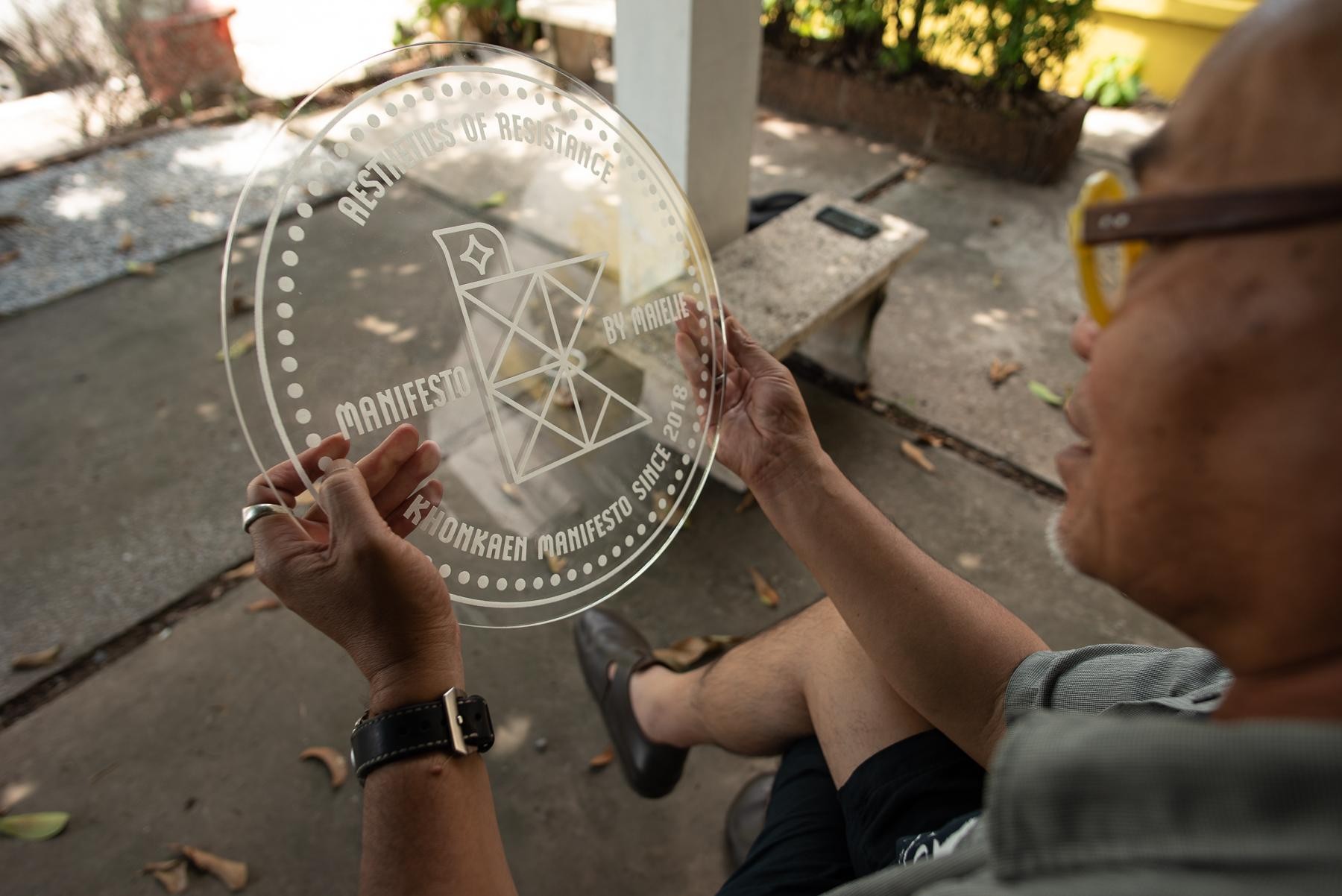
For the inauguration event, Thanom commissioned a glass plate imprinted with the logo of “MANIFESTO by MAIELIE.”
IR: You mentioned that most of Manifesto’s art is related to politics and sometimes even matters of national security. Can you explain more?
TC: We can’t deny that art is a part of our lives. It’s related to politics. Some objects don’t have a political significance or aren’t opposed to those in power.
There was news of security officials prohibiting people from using red water bowls. If you see it as a water bowl, then it’s just a water bowl, so on what basis are you banning it? But if you see it as having a political significance, then if red water bowls are displayed in an art exhibition, I think security officials will definitely close down the event.
IR: Should art serve any political ideology and how is it related to democracy?
TC: I think this may be a 40-year-old question, but according to the definition of modern art under a liberal concept, we should be able to choose to do anything without being concerned. For me, art should be approachable for ordinary people and it should raise questions about society, the world, and politics.
Art and democracy are very much related, because the space to express ourselves is the space of freedom. If there is no democracy or freedom, there is no artistic expression, because art is a result of the human gut bringing out the deepest emotions that cannot be communicated through words.
IR: Do you think art can be a tool for Isaan people who want equality, rights, freedom, and justice?
TC: I think so, because in the past there used to be uprisings where people used mo lam as a tool to negotiate political power with the government. I think art is a tool for all human beings.
IR: You often talk about the aesthetic of resistance. What’s that?
TC: It means that we can create an artistic identity according to our own taste and perception. Our thoughts and identity won’t be dominated by society’s mainstream or by the elders, schools, and teachers and so on.
IR: Let’s go back to the concept that everything is art. Thai society mostly understands art as drawings, paintings, or beautiful architecture. But at “Khonkaen Manifesto,” even works made of garbage or steel scraps were considered art.
TC: We shouldn’t say that art is limited only to the fine arts that are beautiful or magnificent in any way. I don’t think we should limit the definition of art. The works displayed at Manifesto are considered art as they are a result of living our lives. They are also a result of political expression, culture, and traditions, such as how ordinary people eat, shit, have sex, and sleep. That’s also an artistic process.
Art is in our daily lives. It’s just that we need to see the significance of these things and relate them to history, politics, and society.
The elite often see these types of work as ugly and they don’t consider it art. But why can’t art be something ugly?
Aestheticism doesn’t mean beauty. Aestheticism is about emotions and perception, and anyone can choose to perceive and feel anything. That’s why individuals have different opinions on what constitutes art, and art institutions in Thailand have never taught students that aestheticism is about how an individual perceives his or her emotions.
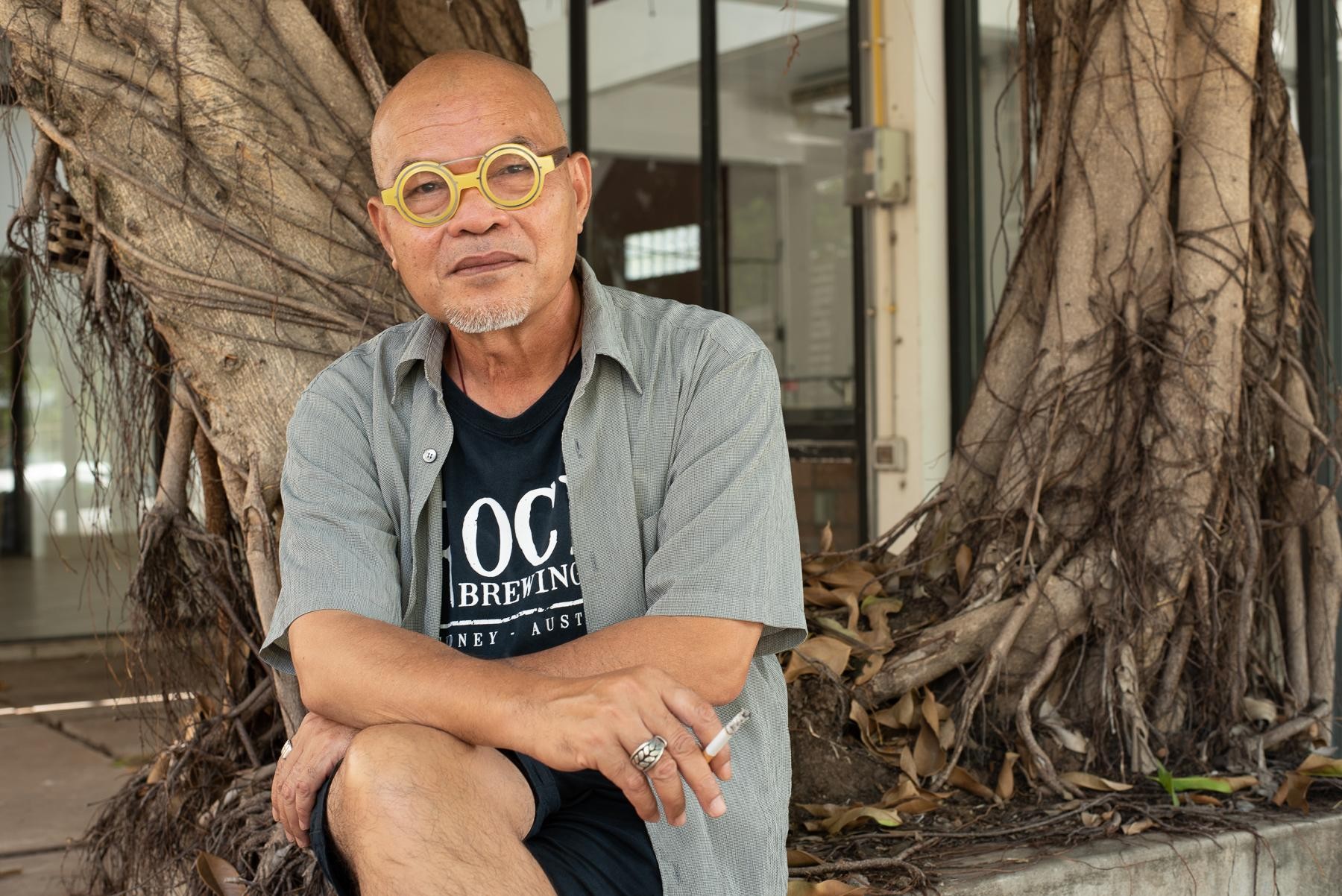
After spending most of his career in Bangkok and at art shows around the world, Thanom Chapakdee, 61, is now returning to his home region on a mission to decentralize contemporary Thai art.
IR: Is it possible for ordinary people who haven’t studied art to understand these works?
TC: I don’t think that’s a problem. The problem is that the word “art” has never been related to ordinary people. We like to talk about art in a way that is inaccessible because the meaning of art was defined by the elite. But after the 18th century, that type of definition has changed. Art is talked about in terms of relating to society and the lives of ordinary people. Ordinary people can draw and work on beautiful sculptures.
IR: What do think about art education in Thailand?
TC: In brief, art courses in all regions–the North, Northeast, South, West, and East–anywhere with a faculty of arts–are quite centralized [linked to Bangkok]. Local art is seen as less important. The way of thinking is centralized, and they don’t allow art students to create art based on local ideas. But other provinces and regions have their own type of beauty.
If we don’t impose limits on technique or form, there is lots of Lao-Isaan art. For instance, during the rocket festival, why are villagers allowed to portray monkeys and people having sex? It’s a form of entertainment. So can we call that art? Let’s find an art space for this type of art.
IR: Any final words on Thailand’s art industry?
TC: I think Thailand’s art industry should focus more on the process of creating art rather than holding exhibitions. We should stop holding exhibitions that often only display photography. Artists should work with communities. They should engage with social and political problems, and artists should use art to create a good, equal, and fair society.
Read this interview in Thai
Khonkaen Manifesto: ตัวตน ความคิด จุดยืนทางศิลปะของถนอม ชาภักดี


